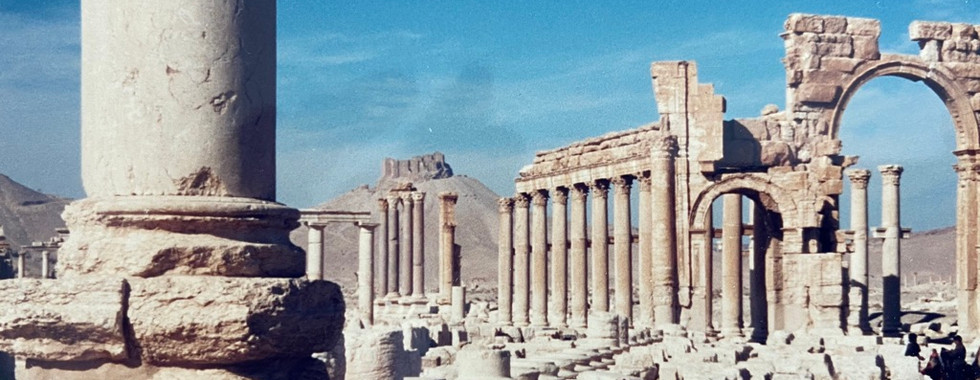Syria
- Jody Ferguson

- Mar 5, 2020
- 3 min read
Updated: Aug 4, 2020
The unfortunate news we read about Syria almost every day really hits home with me because I had the pleasure of visiting that country more than twenty years ago. The occasion of my visit was with members of the Fulbright Program board. I was in graduate school at the time, but I was asked to accompany and help make an appraisal of the program and its continued viability in Syria during the 1990s. I had traveled about the Mideast some during my student days in Paris. Syria had always been on my list, because I knew about its fascinating history as a crossroads of mighty civilizations. Syria was occupied at various times by the Egyptians, the Babylonians, the Phoenicians, the Persians, the Greeks, and the Romans. It has been the site of holy wars from the early Byzantine-Muslim battles, to the Crusades, and to the current Israeli-Arab conflict. As such, the archaeological sites there abound. ISIS did its best during the last decade to deface or destroy a number of these historical landmarks, but when we visited, they all stood in their former glory. The most prominent and famous of these sites is in Palmyra, an ancient Semitic city that grew wealthy from caravans on the Silk Road. Queen Zenobia was able to fend off the Roman Empire for decades but eventually it was captured by the Emperor Aurelian in 273 AD. Diocletian re-built the city in Greco-Roman style with gorgeous temples and amphitheaters. I include several photos of Palmyra. At one point we drove our car along a Roman rode that was built almost two thousand years ago. I also include a photo of that road.
Aleppo, the scene of some of the most savage fighting in recent years, is one of the oldest, continually inhabited cities in the world. It was already a large community four thousand years ago. It’s market, or souq in Arabic, has long been known as one of the largest and most-colorful markets in all of the world. Aleppo is also replete with Roman ruins, as is most of Syria. South of Aleppo sits Hama, a city famous for its seventeen Norias, or wood and steel water wheels, dating from the medieval period. Some of them are as large as twenty meters in diameter.
Just north of the Syrian-Lebanese border sits a massive fortification from the 12th century known as Krak des Chevaliers. It played an important role during the Crusades and was the base for the Knights Hospitaller, a Catholic military order. The day we visited it was cold and rainy, but the views over the surrounding landscape were impressive. It is now a World Heritage site. Before driving back to Damascus we visited the village of Maaloula, which is literally carved out of a cliffside. The inhabitants of this village speak a version of Aramaic similar to the language that Jesus spoke two thousand years ago. A Greek Orthodox church, St.Sergius, dating to the fourth century AD, displayed attractive icons for us to view. Unfortunately, the church sustained serious damage and many icons were defiled over the last decade.

During our time in Syria, I came away awed by the history and overwhelmed by the hospitality and kindness of the people. The war has therefore been sad for me on a personal level, because I came to know a good number of ordinary Syrians. Now I cannot help but wonder what has become of all of them. One of the people I think about most is a beautiful young girl who became our erstwhile guide among the ruins of Aleppo. She would be in her thirties now. Although it looks like the civil war is winding down there, it will take years or perhaps decades before Syria is peaceful and safe enough to re-open her fabulous sites to visitors.























Comments